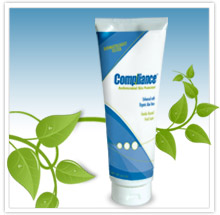
| Independence Day Closure Notice | |
 |
ProMed will be closed on Monday, July 4 in honor of Independence Day. All normal Monday deliveries will be made on Tuesday, July 5. Customers who typically order on Monday for Tuesday delivery should place their orders by Friday, July 1 at noon. If you have any questions at all, we invite you to contact our Customer Care Department at (800) 648-5190. |
| Where is Latex Lurking? Tips and Considerations for Creating a Safer Environment | |
 |
Close your eyes. Now, picture a product in your facility that contains latex. What are you picturing? Chances are, you've conjured up an image of gloves. While latex and gloves seem to go hand in hand - pun intended - latex can also lurk in some unexpected places and be a serious problem for people with latex allergies. What's the problem with latex, anyhow? Natural rubber latex is manufactured using a milky fluid that comes from the rubber tree. When people have latex allergies, their immune systems mistakenly think that proteins found in natural rubber latex are harmful substances. This can lead to allergic reactions ranging from sneezing and skin rashes to anaphylaxis.¹ |
|
Latex sensitivity can be caused by either direct contact with latex or inhalation of latex particles. Products that are made of latex can shed latex particles, which then become airborne. This is especially common with latex gloves.¹ Even powder-free latex gloves can contain a small amount of residual powder that is released into the air when gloves are pulled on and off. It is estimated that between 1 and 6 percent of the general population is sensitized to latex.² Roughly 8 to 12 percent of healthcare workers have a latex sensitivity, partly because of frequent exposure to latex. The costs related to latex allergy are staggering. It can cost between $5,000 and $25,000 to treat just one anaphylactic episode resulting from a latex allergy. On average, the overall cost to treat latex allergy is estimated at $218,000 per employee.³ There is no "cure" for latex allergy. Other latex-containing products While gloves have become the poster child for latex in long-term care, many other products around your facility could also contain latex, including¹:
|
Want to read more? Subscribe to Embrace magazine today! Embrace subscriptions are complimentary for ProMed customers and signing up is a snap - just visit www.embracethemagazine.com/subscribe. |
 |
Compliance® Skin Protectant Dermatologist-tested Compliance Skin Protectant is a cost-effective antimicrobial cream that utilizes zinc oxide to form a protective barrier against wetness. Additional Features:
|
|
Product pricing is only visible to registered promedsupply.com customers. If you are not yet registered, one of our Customer Care Professionals will be happy to get you set up. Just give us a call at (800) 648-5190. | |
 |
 |
